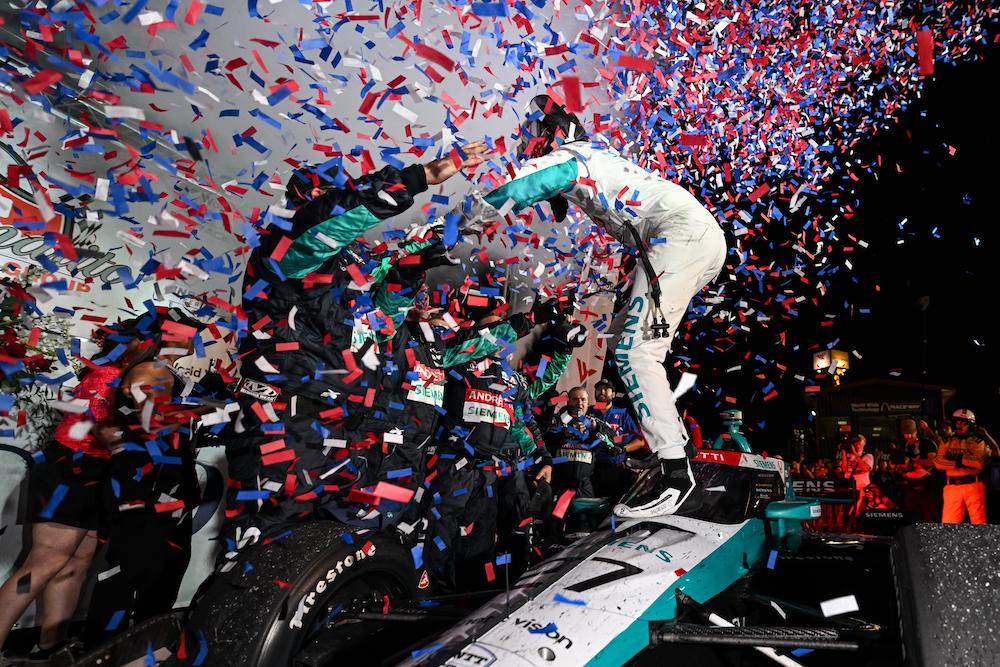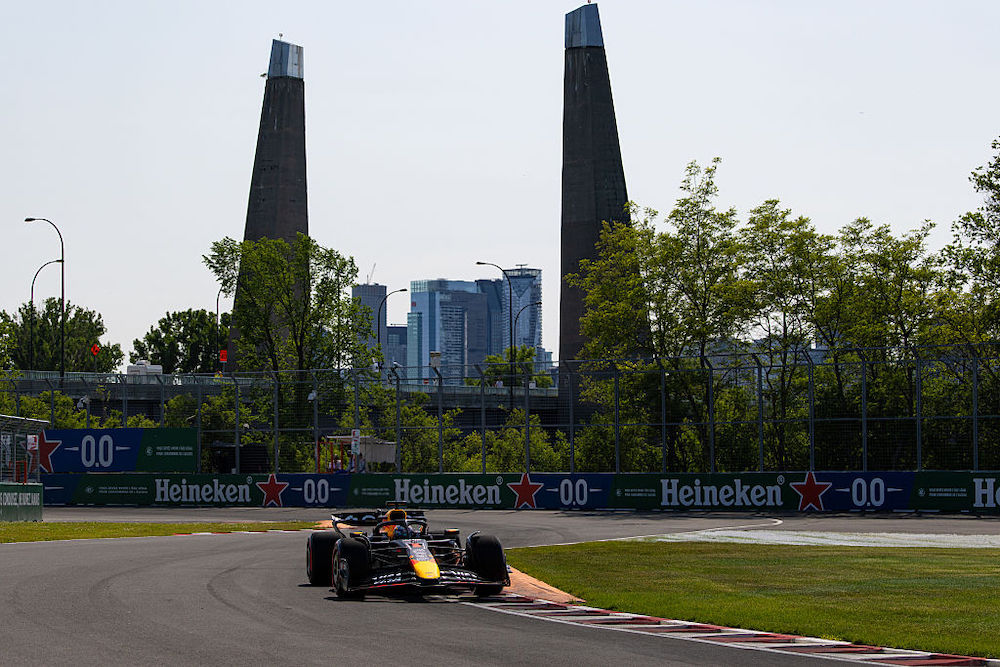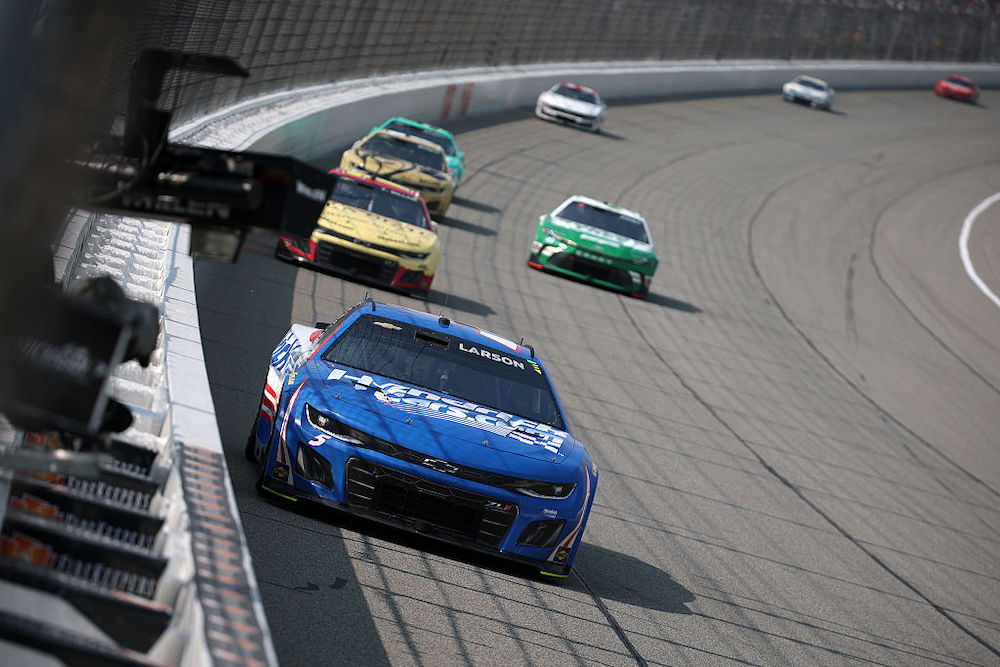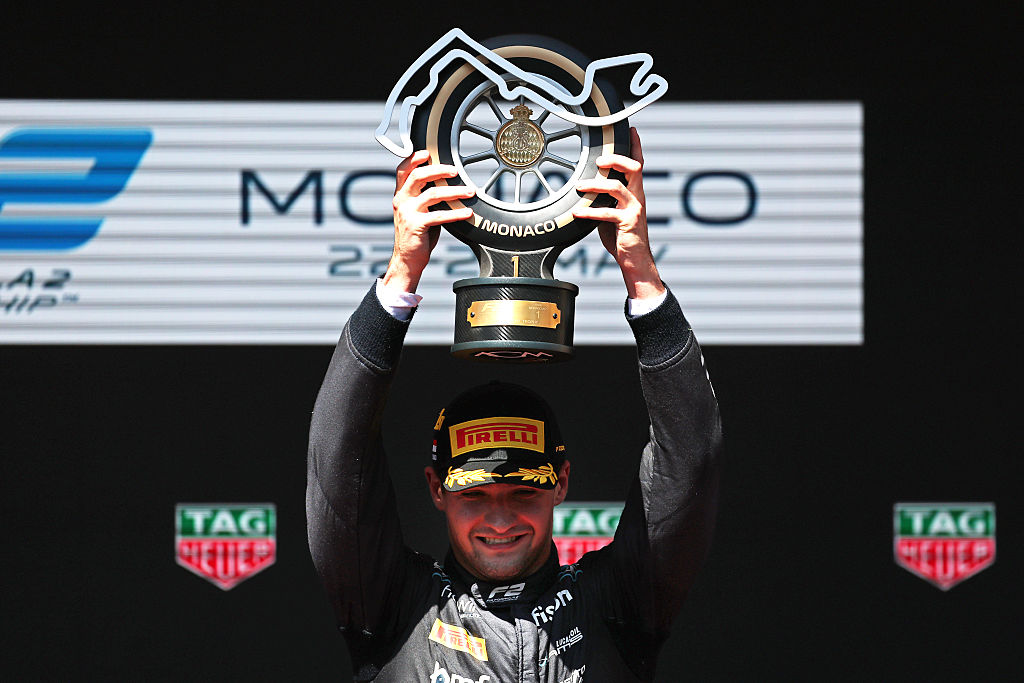Welcome to the RACER Mailbag. Questions for any of RACER’s writers can be sent to mailbag@racer.com. We love hearing your comments and opinions, but letters that include a question are more likely to be published. Questions received after 3pm ET each Monday will be saved for the following week.
Q: Do you think Honda will hang around even though they won the Indy 500, with all the negative headlines that Roger Penske is generating?
The other is with Dodge announcing it will enter NASCAR Truck Series in 2026.We all know that’s just a badge, they all run Ilmor engines. With TV ratings being up – and I hope they continue through the rest of the season – hopefully that might entice Honda to hang around and maybe draw some interest for some other manufactures now that IndyCar has put a firm date on it.
AE, Danville
MARSHALL PRUETT: Might be semantics, but Roger isn’t generating the headlines. Actions by his teams are the causes of the headlines. Yep, that’s the hope.
Q: I’m no longer frustrated but genuinely mad. Pitwall fencing along the straightaways should be mandatory for all IndyCar venues. Do we need a death or horrific injury on live TV before this happens? Robin Miller had been talking about this for years. It’s time for IndyCar to finaly act. Make this two things in IndyCar I never want to see again.
Rob, Rochester, NY
MP: Some went up, for a brief period, at the Indy GP when the big crash sent flying parts over the wall in the mid-2010s. Other than that, I’m OK without them being installed, but I might be in the minority.
Q: What is wrong with RLL, specifically Graham Rahal at Gateway? Slowest finisher behind the rookie Abel in a Coyne machine. As a fellow Buckeye and lifelong Rahal fan, I’m just glad everyone is having fun. The crowd looked really good, we should definitely do more short ovals in prime time.
Speaking of, let’s never run St. Louis in any other time slot than after dark.
Hope you and Shabral are doing well. If it’s all right, I’d love to re-share the link to donate her fight.
Bring back Watkins Glen.
Phil, Chattanooga, TN
MP: Sweet of you, Phil. The fight continues, seven years on. RLL’s going through fairly typical growing pains, but the problem here is it looks and feels like a continuation of the problems they’ve had for a number of years. In reality, the team’s engineering group has gotten bigger and stronger, but it’s still a newish thing, with new members added or others moved to different cars or different roles. When that happens, you tend to get a lot of hit-or-miss weekends, which is what we’re seeing with Juncos Hollinger Racing as well, and JHR has gone through a nearly identical engineering change and growth phase during the offseason.
Graham’s output at the Indy GP was the peak for the team so far, but I’d point to rookie Louis Foster as the real through-line of potential for RLL. He’s a rookie, but he’s usually the fastest in qualifying or the strongest performer on race days. If he could just get to the end of a few races without cartoon anvils raining down on his car, RLL’s fortunes would be vastly different.
Q: I can’t help but think that all of the controversy surrounding Team Penske over the last two years is starting to have an effect. With all of the personnel shake-ups, is some of the Penske magic disappearing? It looked to me like Newgarden’s spotter missed the call to tell him to stay high. I could certainly be wrong about that, though.
Doug Mayer, Revelstoke, BC, Canada
MP: It doesn’t take much for a championship-winning organization to lose its edge. Think of Alex Palou’s contractual dramas in 2022 and how that took his sharpness away while trying to defend his title. Will Power took the crown in 2022 and then had his wife’s life-threatening health issues that made it hard for him to focus and repeat in 2023.
And then imagine what it must be like to deal with repeated imbroglios among the team as a whole and how that could make life harder to maintain the same supreme level of execution. Then see the three senior-most leaders fired, with at least one of them ranking as beloved by all, and that’s an emotional storm to try and survive. Team Penske’s had a forever reputation of being cold and robotic, but if you spend any time with the crew on pit lane, or in the garages, you know the newer and younger version of the team is anything but that. That said, they’ve also signed up to work for a team that expects perfection, and that takes a different personality – one that comes with mental fortitude and discipline.
Of those who remain, they’re incredibly strong, and talented, and that’s why the team was able to show up and show out at WWTR until the myriad problems and misfortunes took the trio out of the race. Hard to say how the month-long mess has affected the team as a whole, and it would be strange to think it’s had no impact, but when I think of all that’s gone wrong for Penske from Indy onward, most of it is a torrent of bad luck or driving errors.
Road America, where Power won and Newgarden finished second last year, feels like the perfect place for the team to put an end to this maddening streak and get back to where they belong.
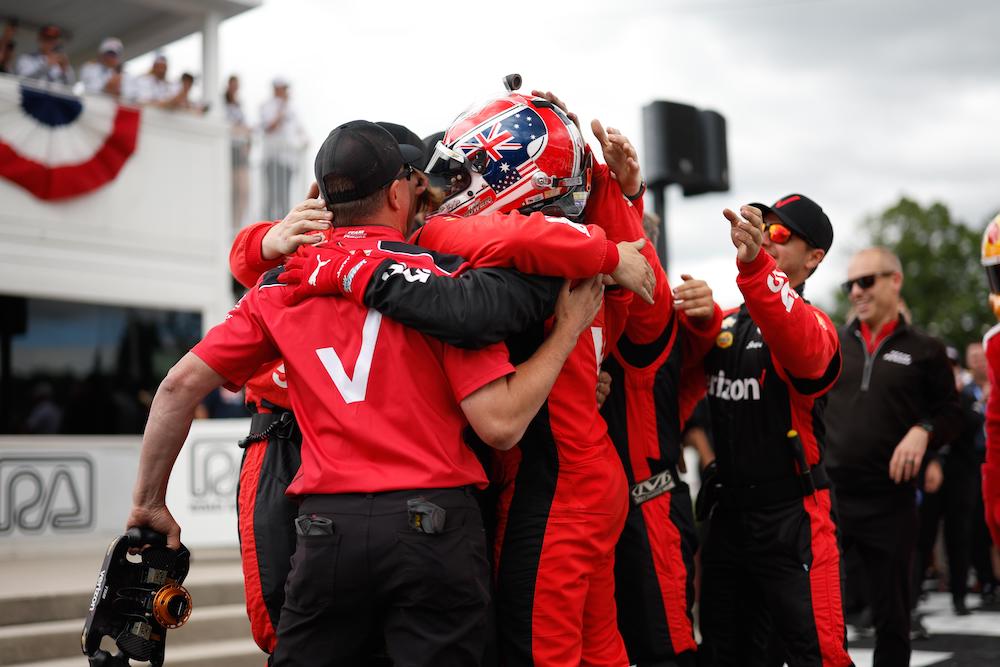
Can Road America spark another reset for Team Penske? Joe Skibinski/IMS
Q: No matter the state of IndyCar management or controversy, I’m still optimistic about IndyCar’s future for one reason that we all saw Sunday night: IndyCar racing is fantastic! This race had everything. That said, I’m simply too jazzed up to sleep right now and I’ve got work tomorrow. Maybe Sunday night racing is optimal for FOX’s schedule, but not mine. Is this race going to be back to Saturday night for next year’s event?
Also, sometimes I feel like we curmudgeonly IndyCar fans get too caught up in the milieu to simply enjoy the sport. I’ve been guilty of this. Sunday night made me remember why I love this sport.
Bruiser from KY
MP: Said it many times last year and let’s say it again: IndyCar’s short-oval hybrid package is awesome. The hybrid weight remains an issue on road and street courses, but it is amazing on the non-speedway ovals. The Indy 500 was quite good, don’t get me wrong, but WWTR, Milwaukee, and Nashville were really special last year and WWTR did it again on Sunday. Assuming the tires match the track and cars at Iowa, we can hopefully add it to the list as well.
No clue where it falls next year, but the prime time slot was a gem. The 2026 schedule is said to be imminent; I was told confirming Mexico City after NASCAR’s race was the request, so we’re on the clock to find out where WWTR lands and whether IndyCar and FOX can convert a few more races to prime time slots.
Q: With how the commentary team brought it up, I’m sure you’re going to get a lot of complaints about the “delay” between Foster hitting the wall and the caution being thrown. I would like to toss in not my two cents, but a slightly more valuable five cents about what I noticed once full-speed replays were shown.
It is difficult to time accurately from my sofa at home, but best I can figure there was less than five seconds between Foster hitting the wall and Newgarden hitting Foster, and yellow lights started flashing about a second before Newgarden hit. That’s a three-four second reaction time by race control – unless they were looking directly at Foster when he hit the wall, as was clearly the case later with Malukas, they weren’t going to be much faster.
So I don’t think race control should be criticized for that delay. Frankly if that was the worst we ever saw from them, I would be quite happy.
As for the race overall, I consider Gateway the worst oval on the schedule… but that very well could end up being the best oval race of the season. And hey, looks like we might actually get a title fight this year!
FormulaFox
MP: Kirkwood left Indy down an impossible 150 points to Palou. Then Palou gets wrecked by Malukas and then the Ganassi team has its first significant miss of the season on setup with Palou. Then Kirk goes on a two-fer and slices that 150-point lead in half to 75 leaving WWTR. We do indeed have a title fight.
I hear you on the big crash caution. It did seem to take a long time to appear; my stopwatch had it at 4.75s and the collision itself at 5.25s after first contact by Foster. Where this reaction time is odd is found in the first and essentially identical crash in Turn 4 with Will Power, and my informal time-to-caution was 2.5s.
Then near the end of the race, Malukas has a repeat of the Power and Foster impacts at Turn 4, albeit much lighter, and the time-to-caution was approximately 1.3s. It was nearly instantaneous. Why, then, the middle crash for Foster took between two and four times as long for the yellow lights to be activated on the steering wheels and lights encircling the track, is beyond me.
Q: The penalties for Malukas and McLaughlin both felt necessary and unavoidable. The very next stop for Malukas under green required the exact same launch. It’s just the fast lane was empty. How were drivers supposed to get out of the box into the transition lane without hitting crew or equipment for the car ahead?
IndyCar kind of has to call the penalty, but ouch.
Ryan in West Michigan
MP: I always default to the question that isn’t being asked: How, then, did the other 20-plus drivers get out of the box without hitting equipment and go to the slow lane instead of the fast lane? If it was such an impossible task, we’d have seen dozens of combined penalties throughout the race.

Not much to debate when it comes to Malukas’s penalty. Chris Jones/IMS Photo
Q: Enjoyed Sunday night’s race very much, but the Newgarden crash really panicked me for a brief moment when I thought that his cockpit might be vulnerable had it been a little closer to the pit lane.
I watched a few replays and want to know if, in fact, the driver’s head is vulnerable to intrusion from something like a narrow wall or pole if the worst possible scenario occurs? Were you able to talk to him after the crash?
Tom Patrick, Baja California
MP: I didn’t speak with him. Yes, despite the aeroscreen and halo, these are open-wheel and open-top cars, so a pole could go into the cockpit from the top down. Other than that, the upper halo ring is what acts as a barrier for walls and whatnot from coming across a driver’s helmet.
Q: What happens to an IndyCar tub after it has been damaged beyond repair? I’m thinking of more severe wrecks than those that might become show cars or rollers for pit stop practice. Does the whole thing end up in a landfill, or are there any components that are able to be salvaged and grafted onto other cars?
Pete, Rochester, NY
MP: Depends on the situation. If it’s not broken apart, yes, a show car or pit stop car is the common route. If it’s worse, or a fatality was experienced, being destroyed and sent to a landfill had been done. There’s nothing significant that I can think of to graft from a DW12 tub onto others.
Q: I don’t fully understand my love for IndyCar. I have accepted this and I guess those around me have as well. Like a romantic relationship, especially early on, there are nervous butterflies, jealousy, embarrassment, a heightened concern for one’s physical appearance, pure joy and then later, deep trust, unconditional love and a bunch of other stuff that is not fully understood.
Sunday’s race at WWTR was awesome. Hopefully, a first date with IndyCar for many. Yes, I was embarrassed for Jack Harvey when he was a little too late for the grid walk, worried he made a bad impression with hopefully millions watching. Yeah, a network cameraman fell over a driver while chasing him, landing on the ground with his camera pointed back at his own face. I had nervous butterflies during the formation laps when drivers were expected to change from three wide to two hoping they would get the start right. I experienced pure joy when it looked like 10 55-gallon drums of Shell race fuel exploded simultaneously along the straight.
Later, watching drivers race wheel to wheel two or more wide, Conor Daly running the high-line sans some stupid NASCAR racing glue just like everyone wants drivers to, and all of this with the highest level of deep trust and maybe just a little unconditional love? I relied on Hinch and Townsend to help me understand, and ultimately just accept unconditionally, fuel mileage and pit strategies, along with Will Buxton. As much as I wanted Conor to win and then several other drivers who were rotating through the winners circle in my head, I got to see a celebration that for many years has been kept secret on television, the champagne podium celebration.
It’s good to know that IndyCar will always be there for me, just like my lovely wife who loved Belle Isle and tolerates the Detroit GP. I personally loved it. Now begins the arduous process of figuring out how to make WWTR a worthy camping trip?
Jeff, Eaton Rapids, MI
MP: Favorite letter in a while, Jeff. Thank you.
Q: Hello! I have two items:
First, the commentators in the FOX booth, mostly Will Buxton. seemed to think IndyCar should have punched the yellow button much sooner for the crash involving Foster and Newgarden. Will seemed extra-critical. Was it really a mistake?
Second, I never thought I’d miss the Mailbag as much as I did last week. Just so you know, I love me some Mailbag.
John, Downers Grove
MP: Kind of you to say, John. Sometimes the commentators get super grumpy about something and then half of the questions for the Mailbag are about the super grumpy thing, and I often disagree with their take. This isn’t one of them.
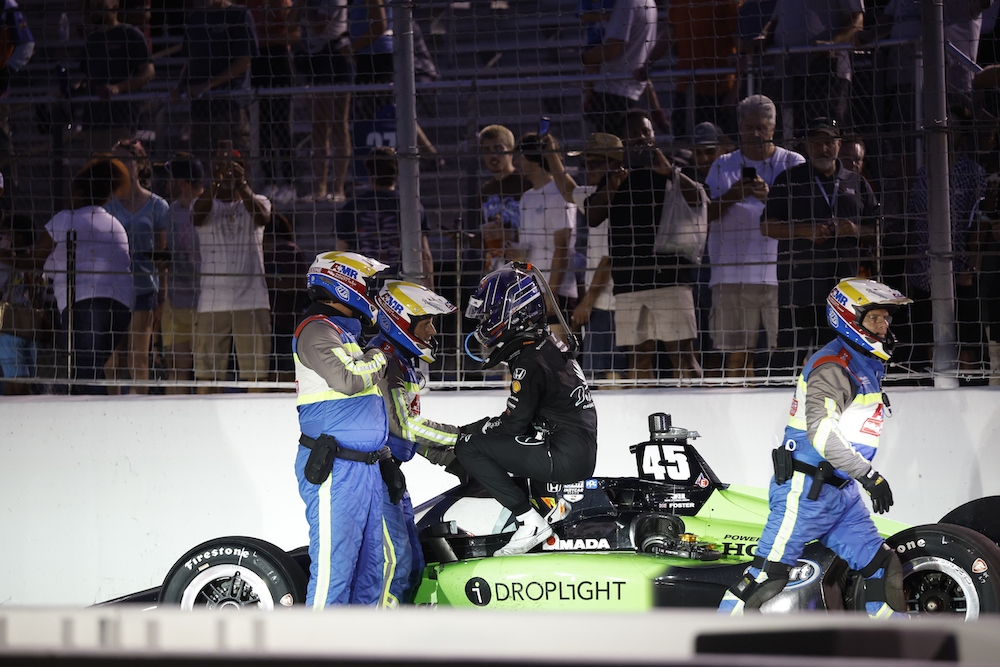
Maybe the button needs to be bigger. And yellower. Michael Levitt/Honda
Q: I usually spend my time writing to you about IndyCar’s failure to change course with their hybrid decision that has really proven to be total dud. Expensive for teams, and adds nothing to the on-track product.
On Sunday I found myself with a pit in my stomach after watching the crash between Josef Newgarden and Louis Foster. While the crash was unfolding, I immediately flashed back to the horrible day of 9/15/01. Louis and Joseph were fortunate; it could have been much worse.
Can IndyCar explain what took so long for the track to go yellow after Foster hit the wall? Will Buxton on the FOX broadcast commented that it took at least five seconds for the yellow to be displayed. Later in the race, when Malukas contacted the wall, the track immediately went yellow. Was race control asleep at the switch? What was Newgarden’s spotter was relaying to him as Foster was bouncing off the wall?
Michigan Matt
MP: I’m sure they could, but would formal explanations change anything? As noted, two of the three Turn 4 crashes had caution lights on in 2.5s or less. The big one was around 4.75s, which is a long time when 1.3s and 2.5s were seen in the other two.
Would a faster yellow have prevented the big one? We don’t know. Maybe. Possibly. What was or wasn’t being said to Newgarden from above or pit lane to warn him of the crash? We don’t know.
Using the end results, it feels safe to say Foster’s crash wasn’t detected as it was happening, and if it was, you’d expect the person in charge of switching the caution lights on to hit that switch ASAP. So it either wasn’t seen right away, or there was an issue with the switch or the system from being activated.
And if Josef’s spotter saw it happen when it happened, or it was seen by his strategist on pit lane, you can assume they’d have said so with zero delay. So it either wasn’t seen right away, or someone was on the radio at the time and the message couldn’t be delivered, or there was another issue.
Overstating the obvious, but if race control saw it happen, there’s no reason for them to not hit the switch because they did it early in the race when Power had the same crash. So, it wasn’t seen at the time of impact or there was a technical issue. Same with his spotter/pit lane. Otherwise, the light’s on in 2.5s or less, or he’s told to take avoiding action well before he’s out of Turn 4.
Q: It’s good to see that the date change (I assume because of NASCAR) didn’t appear to affect the attendance at Gateway.
The last time I went to Gateway in 2021, was a very last-minute decision but I was able to purchase tickets at around 3pm on race day, and go and have a decent race to watch. This year was the first time I could go since then, but I only found out on race day that it would be possible. However ticket sales had already ended despite the grandstands not being full. I assume that the track would rather have had my money than not. Do you know if there is any particular reason why ticket sales ended on race day?
Ian, St Louis
MP: I don’t, and that’s bizarre. It was a decent crowd, but there were empty seats. Maybe the seats were sold and the potential for poor weather or some other reason kept folks from sitting in them.
Q: Referencing back to the ICONIC project before the DW12/V6 era, has IndyCar engaged with fans, universities, and businesses for input on setting objectives for the 2028 engine, chassis and marketing?
Craig, Newport Beach, CA
MP: Not to my knowledge.
Q: Can you explain how Dixon got the lead, then pitted and kept the lead at WWTR? I was confused and have talked to several who do not understand how that worked.
Brian Hartman
MP: All about timing of the lap 195 caution for Malukas getting into Turn 4. Dixon was 12th on lap 188, then had the 10 car, the 76 car, then the 4, 21, 26, 5, and 8 pitted from in front of him by lap 191, then the 3 pitted on lap 192, and he was up to fifth. Then the 27, 66, and 14 pitted on lap 193 and he was promoted to second.
Then the 18 pitted on lap 194, one lap before the caution, and when it went yellow, he was leading and every driver was at least one lap down to him… Nobody nearby needed to pit under the caution, so Dixon went in, got fuel and tires, came out, and was still in the lead due to having that one-lap advantage when he went in on lap 200.
He lost the one-lap advantage by pitting, but was still in first place, and took the lap 207 restart in first. Just wild.

The timing of the caution for Malukas played right into Dixon’s hands. James Black/IMS Photo
Q: I’ve heard that Honda (probably Chevy/Ilmor too) gives away a few free engine leases to their favorite/top teams or drivers. Is that true?
Tyler, Milwaukee
MP: Yes. For decades. And by most manufacturers in top racing series.
Q: How long before Roger Penske or Chip Ganassi start looking at Kyle Kirkwood, assuming they’re not already? He seems the real deal, but I suspect he’s locked in at Andretti for the foreseeable future?
Gareth Holt, London, UK
MP: He’s signed through at least 2026, so I’m sure he’ll be a hot commodity if he doesn’t sign an extension with Andretti.
Q: How is it possible that Kyle Kirkwood’s car went through tech inspection after he won the race in Detroit? His front wing was damaged (by his own action) and this could lead to a dangerous situation on track. Other than that, the front wing did not meet the necessary measurements. What makes this different from the Indy 500 where cars got fined after technical inspection?
Barend Blom, Hertogenbosch, The Netherlands
MP: I genuinely don’t understand how this is a mystery. The wing was broken. And not broken in a way that provides an advantage, but created a disadvantage. So it’s not subject to the same rules of inspection. It’s been that way in racing forever. Two NASCAR Cup drivers tangle with each other, have damaged bodywork that no longer conforms to the bodywork template, and those drivers aren’t penalized on post-race tech. Same thing here.
Q: Do you have an update on Linus Lundqvist’s 2025 race year activities? Any likelihood that he might return to IndyCar in 2026? He sure seemed to have a very good rookie year at CGR in 2024 to come up empty in IndyCar for 2025.
Tom Fitzgerald, CPA, Las Vegas, NV
MP: Other than hearing he’s suing Ganassi, no, I’m not aware of any race dates on his calendar.
Q: I have a few questions regarding Indy Car. First, what is the small shark fin on the top of the right sidepod for?
Also, while watching qualifying on TV for the 500, the announcers spoke of Jacob Abel’s crew trying to cool his heat-soaked engine after a too-slow qualifying run. I get what heat soaking is. They were running cooling fans into the radiators. etc., and even had him go out and run a slow lap or two to cool it down. So is there a way the crew circulates the coolant while the fans are blowing the air into the radiators? Also, why not just run the engines at high idle when they come in and spray the radiators with water, which would cool them down in about a minute or two? Is that against the rules, or would it maybe cause damage to the engine?
Gary Stanton, Mondovi, WI
MP: Communications antenna. Against the rules. Teams could do all kinds of smart and quick things to bring engine temperatures down if they were allowed.
Q: Does Dennis Hauger have an IndyCar seat promised to him next year? Going from F2 to Indy NXT doesn’t make sense from a career development perspective.
Will, Indy
MP: It makes sense for a driver like Hauger who did three seasons in F2, was going nowhere after a best result of eighth in the championship, and decided it was better to stop wasting time trying to get to F1 and to give the U.S. a try.
As most IndyCar team owners have told me, a F2 driver who was never inside the top five is going to be better and more developed than almost any front-running Indy NXT driver, which checks out (see C. Lundgaard, two seasons of F2, best championship finish of seventh).
Smart move by Hauger, who’s making the other NXT rookies and veterans look underwhelming.
Q: In a response to the question about Honda’s involvement in the last Mailbag you cited reduction in cost as one of their primary concerns.
It’s an old topic and I have read multiple times that the costs are too high for producing more engines. (I believe this made engine leases somewhat scarce some years ago.) Is that still the case? If so, this has always seemed backward to me. I can understand that R&D drives costs up, but isn’t the payback in leasing as many engines as you possibly can?
I always figured that any engine manufacturer’s primary investment was in R&D (high risk/reward trade-off) which pays back when they sell/lease more units, which drives the average cost down. Not sure how much R&D is going into a spec engine, but even so why would producing fewer engines be more cost effective for Honda?
Further, if IndyCar engines are low sophistication spec engines (i.e. R&D relatively low compared to most motorsports) why can’t Honda, whose core competence is manufacturing efficiency make money? Don’t they have a break-even number of engines they have to lease, and anything above that is profit?
The only reasonable explanation I can think of is that they don’t have the infrastructure to produce more engines and would have to invest in more factory capacity or re-allocate it from another race program.
Mike
MP: Fairly straightforward answers here. Chevy is given a fixed annual budget to work from with its IndyCar engine program. Same with Honda. If that wasn’t the case, and both could spend freely, they’d have facilities that are five times as big, have a thousand-plus employees apiece, and make 1200hp engines that are junk after each session.
But since that’s not that case, unfortunately, they have to supply and support what they can with the budgets they’re given. And as we’ve seen, that’s covering 13-16 full-time entries each and a few one-offs at Indy. Has nothing to do with efficiency or manufacturing capabilities. It’s managing a limited budget.
As we’ve documented since the current formula debuted in 2012, every lease comes at a loss. I could never get Chevy or Honda to say what the exact number was, but when I asked, “Is it under a half-million per lease?” I got a laugh from former HRC technical director Roger Griffiths, who said, “I wish.” So making more engines and signing more leases isn’t a money maker; it’s a money loser.
That’s part of their budgets, which can be considered a marketing expense since both are known to spend eight figures per season for all that’s involved to supply engines.
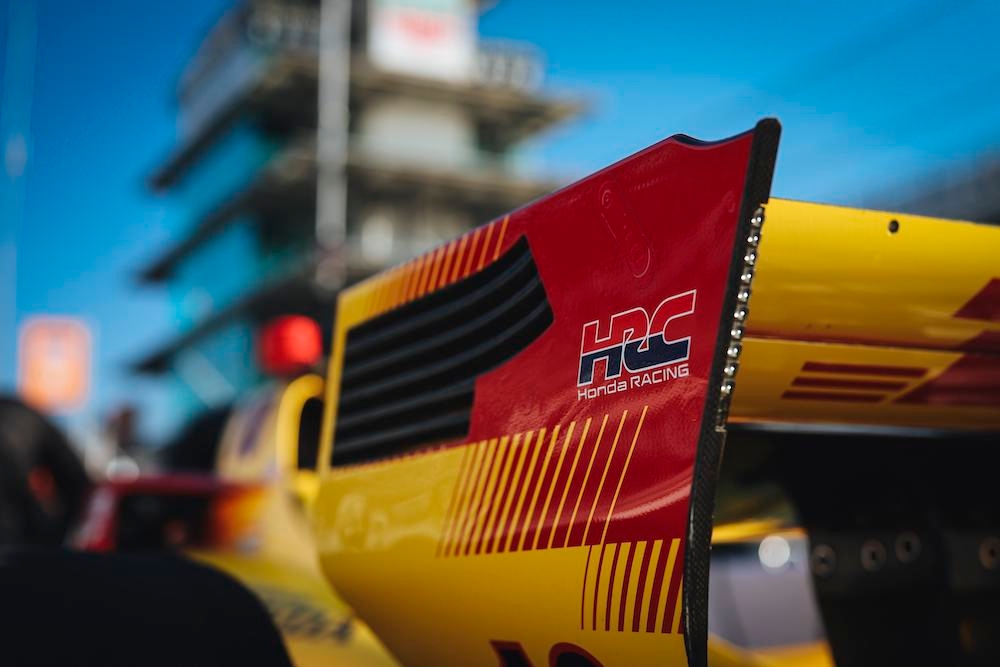
IndyCar engine supply is a numbers game in more ways than one. Chris Jones/IMS Photo
Q: I’ve been amused by the recent discovery of cars being caught out of spec.
I love the old NASCAR stories about how teams bent the rules – (innovation until caught). The creativity of the Smokey Yunicks of the world is fascinating.
I know the importance of image for IndyCar team sponsors makes the impact of getting caught difficult to justify for the teams. My question is in two parts. First, how much cheating goes on in IndyCar today? With a spec car, a small increase in performance can have a significant impact on the team’s performance.
Second, with your experience as a mechanic and team manager, do you have any cheating stories where the statute of limitations is over, and you can share?
Wally, Eden Prairie, MN
MP: Hard to answer how much cheating goes on today because if it was known, those are the kinds of things that would get mentioned to IndyCar.
My career was pretty boring from that perspective. We intentionally changed the rev limit on our Oldsmobile engine in qualifying at Charlotte in 1997 (I think it was Charlotte) to 500rpm above what was allowed (I think it was 11,000 and should have been 10,500) when we were convinced the Menard team was blowing way passed the 10,500 limit – it was pretty obvious to our ears – and had alerted officials to our suspicion.
They told us the Menard ECUs were checked and they were all legal at 10,500. We couldn’t figure out how that was true, so we set ours to 11,000 to see if they were actually looking. We didn’t change our gearing, so there was no concerns about revving the motor above 10,500, and sure enough, they checked, saw we weren’t legal, but also looked at our RPM traces and saw the motor stayed under 10,500, and we were told to correct it and weren’t penalized.
Years later, the story of Menard modifying their wiring harnesses to connect to a hidden second ECU with the non-10,500 rev limit made the rounds… Our little stunt was to inspect whether the inspectors were doing what they said they were doing, which they were, but when a team allegedly installs a second ECU to hide its high-revving capabilities and all the inspectors see is the fake 10,500 limit in what they think is the one and only ECU, you have a problem.
Q: In response to John from Ann Arbor’s message about volunteers cleaning up the Speedway: The volunteer groups get paid by IMS for the work. The groups use the Speedway cleanup job as an annual fundraiser.
Rocky, Indianapolis
MP: Great to hear!
Q: In the 6/4 Mailbag you mentioned Andretti Global being better without Michael there. This surprises me. Without asking for specifics, is this due to performance or interpersonal dynamics, cough, Cadillac F1, between he and the moneybags Towriss and Walter? Most of us believe IndyCar, and Andretti Global, is worse off without Michael there.
Also, since it still is Andretti Global, can we assume the check Michael received had a lot of zeroes on it?
Mike DeQuardo, Elkhart Lake and Sheboygan
MP: I’ve asked a lot of people there about the change and yes, all have said the team is better after the change, so that’s the internal take. A greater investment on the engineering side was made as well, I’m told, which likely accounts for the team being a threat from the start of the season.
I agree – I don’t believe IndyCar is better without Michael, but the team itself does seem to be more competitive after the change. I can’t imagine Michael left without many new zeroes.
Q: Had a discussion with my brothers while at IMS for eight days of practice/racing this May. We’ve eaten at Charlie Brown’s, Long’s, Workingman’s Friend, and the Mug. Not all in the same day or even the same trip, but it got us thinking. What was Robin Miller’s daily trifecta/pick three? Charlie Brown’s for breakfast? Workingman’s lunch? Mug dinner? Box of Long’s at the desk? Did you ever complete one of these with him?
Team Stache
MP: I knew you didn’t eat at all in the same day because dead people don’t write letters.
He swore off Mug in the later years. Had all with him except Charlie Brown’s. He’d bring Long’s in on a regular basis. There’s a Mexican restaurant that was a favorite, but more for the conversations with friends than the food itself. His palate was unlike anything I’ve seen with a human adult. Constant barrage of sugary sodas and candy. Donuts. Burgers. Plain potato chips. Cold fried chicken. No vegetables. Etc. If this sounds like everything a toddler wants, you’re correct. What a life.
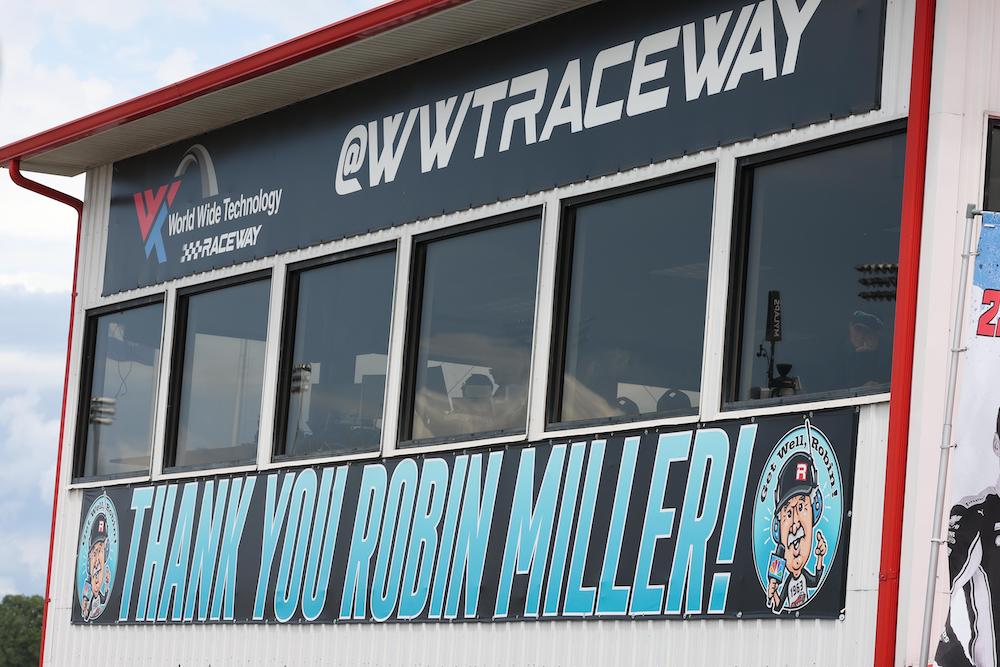
What a life indeed. IMS Photo
Q: If IndyCar drops back to a single engine supplier, how about going back to multiple tire manufacturers as a differentiator? Seeing all of the Goodyear marketing around the 500 this year made me yearn for the days when tires were made to optimize both performance and durability. (And when Big Al and Bobby drove for opposing teams.) That should make for better racing, and something for Hinch and Townsend to talk about other than tire deg during road and street courses.
Fred, St. Louis suburbs
MP: Not so much. What makes soft tires get even softer and gripper and create a lot more deg? Competition between tire manufacturers. I’d love to have multiple tire suppliers, regardless of how many engine suppliers are in the series. But you also get grip battles on road and street courses and short ovals, so there will be downsides for one of the brands and fields of spent rubber lining the tracks.
Q: After all the hoopla, haven’t seen the Driver’s Eye view helmet cam recently. Technical issues? Cost issues? Teams/driver complaints?
Greg Lepore, Charlottesville, VA
MP: We did a story early in the season that mentioned it was scheduled for use at four events.
Q: How good was Palou’s car at Indy? I watched a lot of the practices and it looked to me like he was absolutely equal to Newgarden in pace and in traffic. It appeared to me he was playing possum and telling everyone he was not in Newgarden’s league. Everyone, especially the FOX crew fell for it. Was he as good and fast as I thought?
SS
MP: Without a doubt. But if anybody didn’t know Palou was due for a win at Indy, they weren’t paying attention when he arrived as a rookie in 2020 with Dale Coyne and qualified seventh and returned with Ganassi and finished second in 2021. He was fourth in 2023 and fifth in 2024. I can’t think of anyone who was more ready than Palou to get his first 500 victory.
